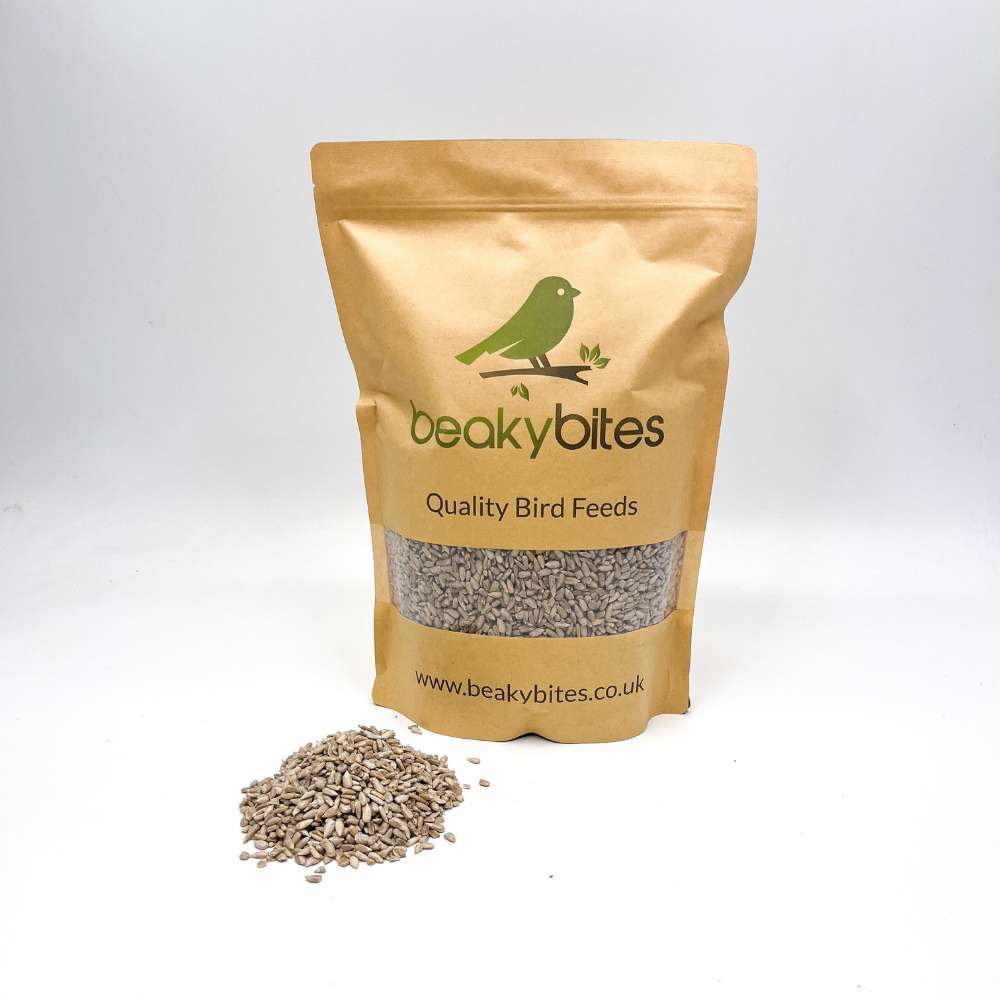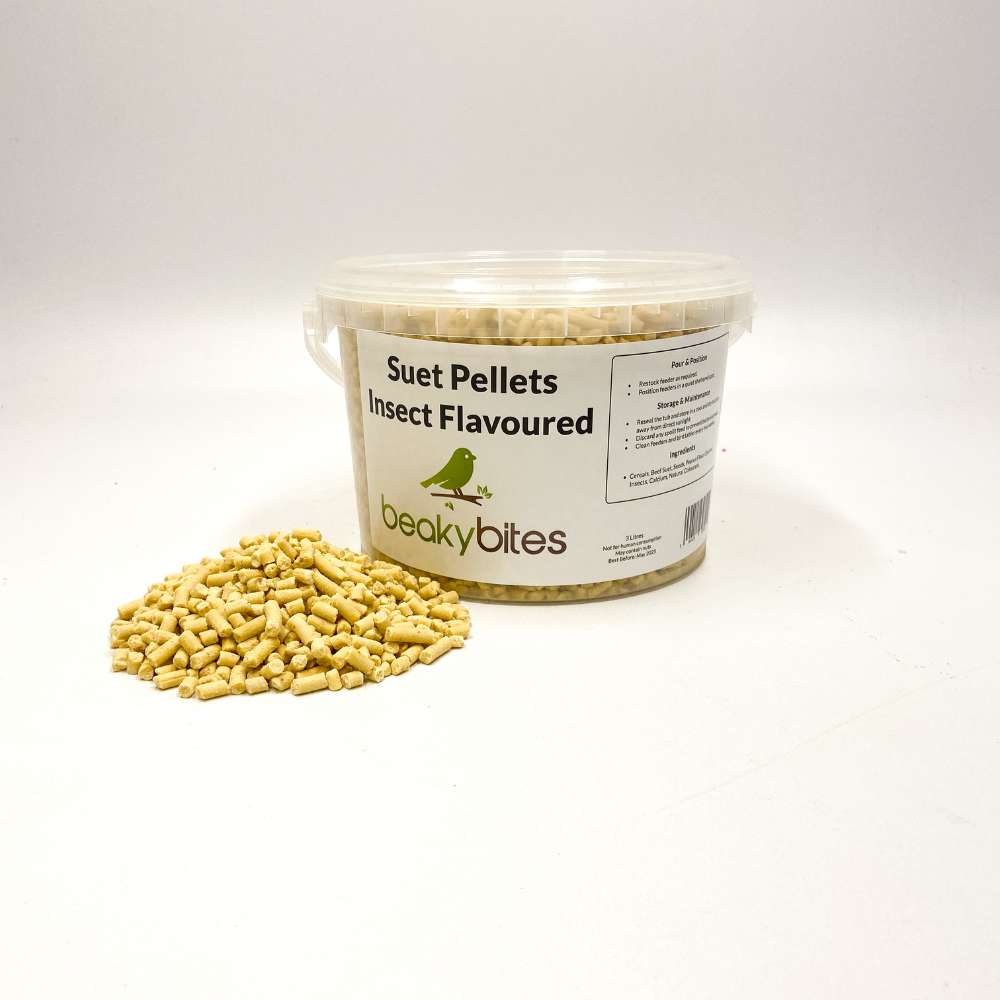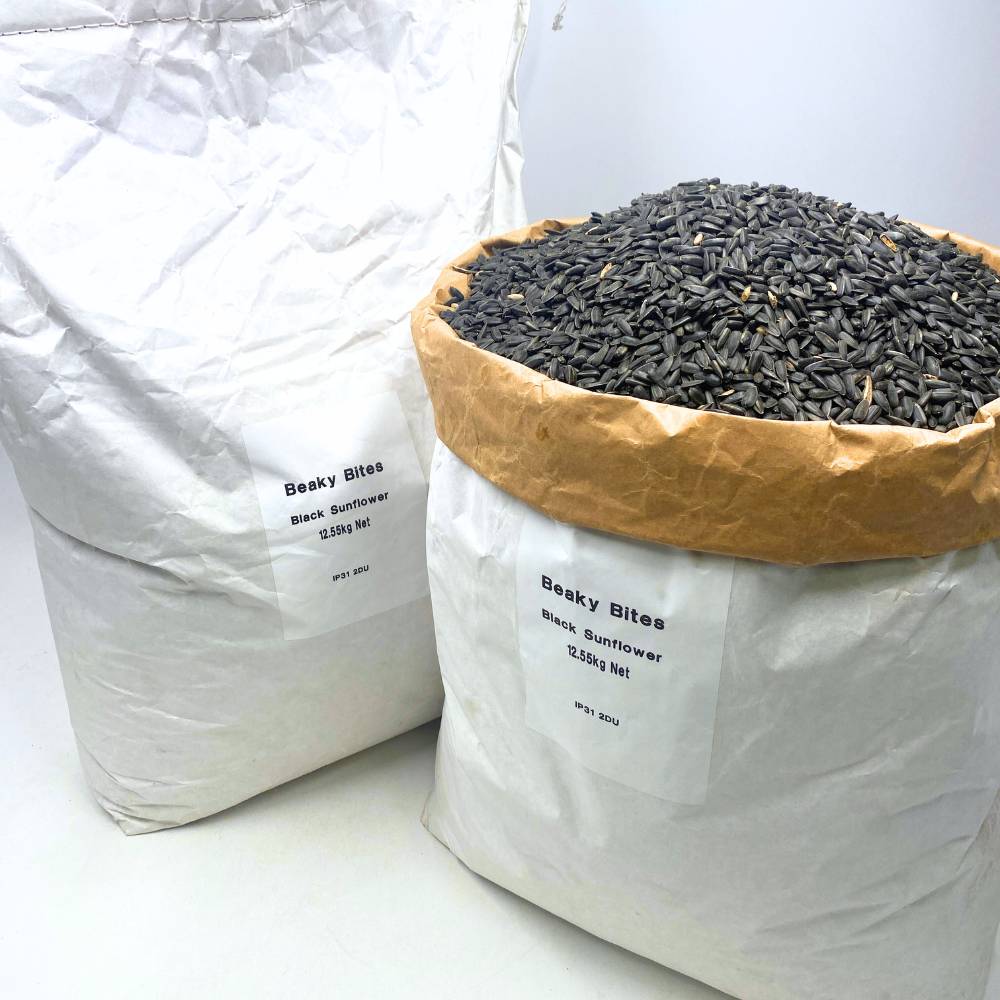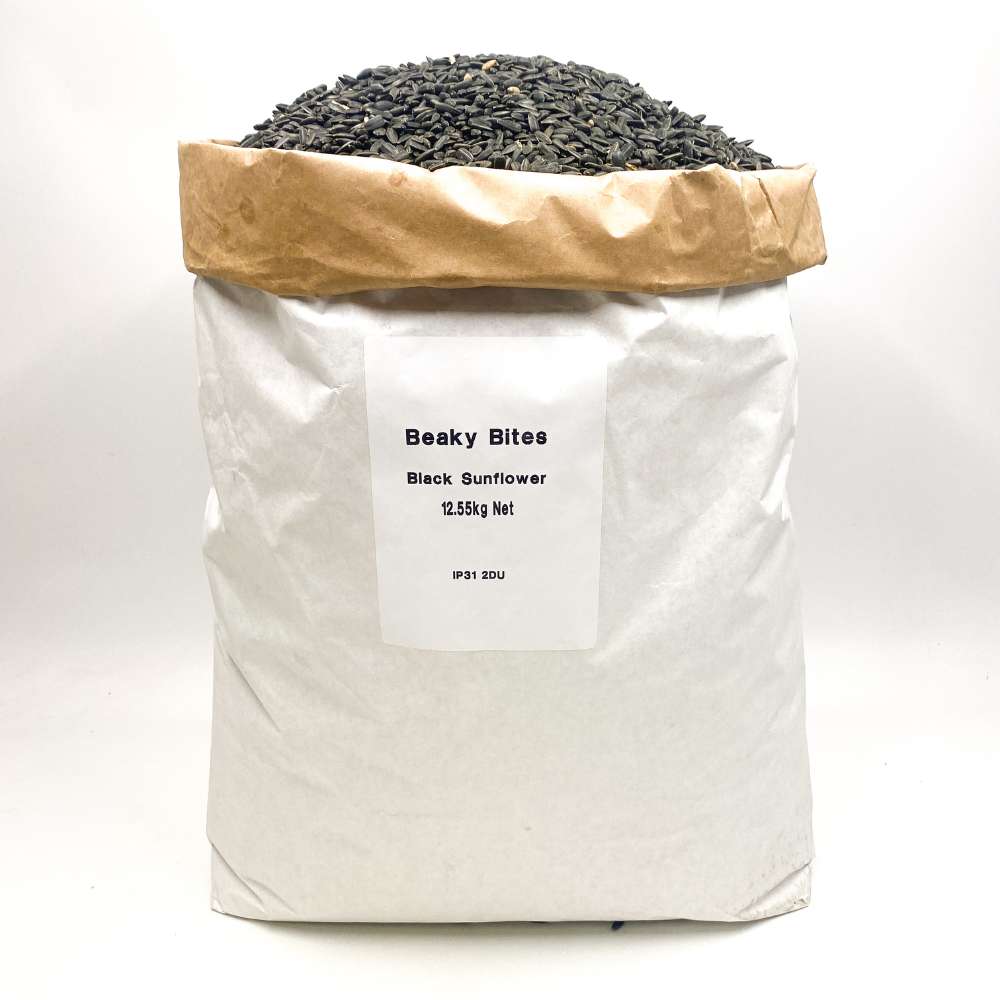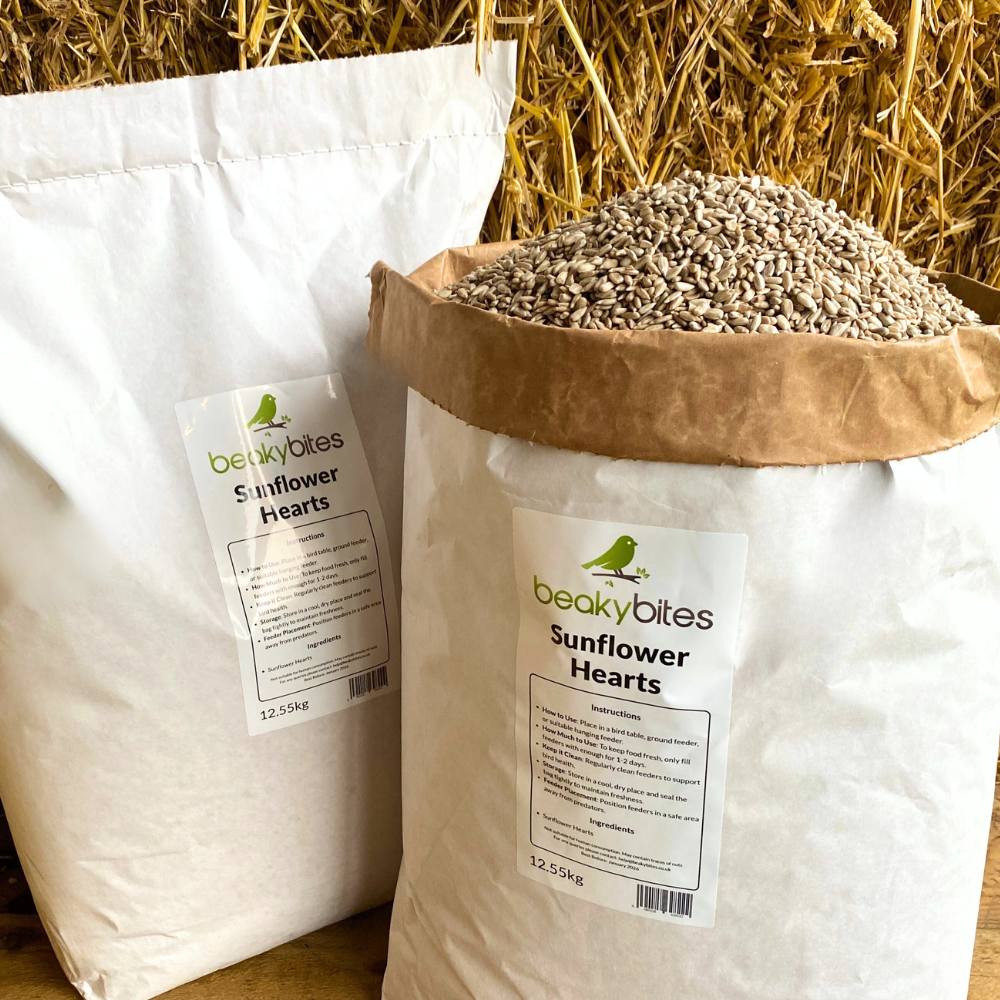Bird Fact File: Starling

Welcome to our bird guide series brought to you by Beaky Bites! In each post, we'll take a closer look at a beloved UK garden bird to help you better understand and appreciate these amazing birds. From identifying distinct features to discovering their favourite foods and nesting habits, this series aims to provide an overview of our feathered wildlife.
Let's Meet the Starling
Starling Fact File | |
|---|---|
| Size: | 21cm, head to tail |
| Wingspan: | 35-42cm |
| Weight: | 75-90g |
| Colours: | Brown, Black, White, Pink, Cream |
| Eggs: | 4-6 eggs per brood, 2-3 broods a year |
| Nesting: | Cavities in trees, buildings or nest boxes |
| Population Status: | At Risk |
The starling is a brave and beautiful bird, easy to spot with its black feathers that shimmer green and purple in the sun. It’s got white spots on its feathers so it looks amazing in winter. You see them in gardens, parks and farmland, foraging on the ground or in noisy gangs. Known as Sturnus vulgaris scientifically, starlings are part of the Sturnidae family. With over 1.8 million breeding pairs in the UK, they’re a common and lovely sight all year round.
.jpg)
Appearance and Behaviour
Starlings are beautiful birds with shiny black feathers that glimmer with green and purple. Both males and females have this stunning plumage but in winter they get a speckled look with white spots all over their bodies. Juvenile starlings are very different, they start with plain brown feathers and then get their brilliant adult colours as they mature.
Starlings are opportunistic omnivores, they eat insects, worms and berries in the summer but in winter they will eat suet, peanuts and fruit from garden feeders. Their beaks are perfect for probing the soil or picking at food on bird tables and hanging feeders.
Starlings are very social and noisy, they flock together, fly and feed in parks, farmland and gardens. In autumn and winter their murmurations – where thousands of birds twist and turn in unison – are a wonder to behold. Their chatter and whistles add energy and fun to any outdoor space, they are a pleasure to watch all year round.
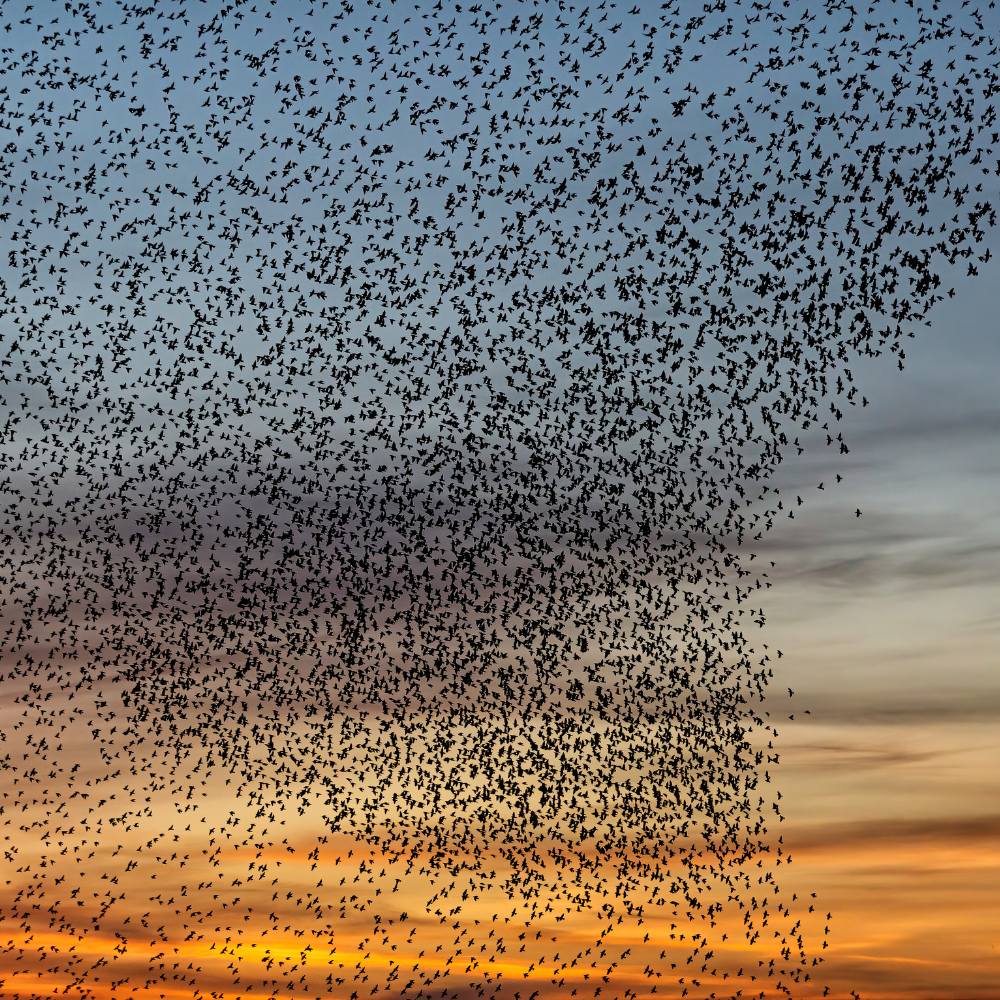
Where do They Hang Out and Eat?
Starlings are clever feeders, making the most of what’s out there all year round. In spring and summer they feed on insects and larvae, beetles, caterpillars and spiders which provide the protein for their growing chicks. You’ll see them probing lawns and soil with their beaks, searching for hidden prey.
As autumn and winter arrive and insects disappear, starlings switch to berries, fruit, seeds and suet. They love fat rich foods like suet pellets and fat balls which give them the energy to get through the cold months. Starlings are bold and adaptable, often visiting garden feeders in large, noisy flocks, adding lots of activity to any outdoor space.
Starlings are found in all sorts of habitats, urban, farmland, woodlands and gardens. They roost and nest in trees, buildings or any sheltered spot and prefer open areas for foraging. A garden with suet feeders, fruit and berry producing shrubs like hawthorn or elder will soon attract these gorgeous birds.
Their shimmering plumage and chattering, mimicking calls make starlings a spectacle in any garden. Their dynamic flocks and lively behaviour add lots of energy and excitement to the wildlife experience.

Breeding and Nesting
Starlings start breeding in the spring, usually April and can raise 2 or 3 broods in a good season. A brood is 4-6 pale blue eggs, the female incubates for about 12 days. Both parents are busy feeding the chicks, a protein rich diet of insects and larvae to help them grow fast. The young fledge after 18-21 days but often stay with the flock while they learn to forage.
During breeding season starlings become more territorial and focused on nesting. Their various calls, whistles and clicks can be heard as males sing to attract a mate and defend their nesting site. Once paired they form strong bonds and work together to raise their young.
Starlings nest in cavities, tree holes, building crevices or even nest boxes. Their nests are made of grass, moss and twigs, lined with feathers and soft materials for warmth. Simple in design but sturdy and safe for their chicks. Starlings are adaptable and resourceful, they thrive in urban, farmland and garden environments, they bring life and energy to any place.

Attracting Them to Your Garden
Starlings are opportunistic feeders, they eat insects, worms and fruit depending on the season. If your garden has a variety of food sources like berries or insects it’s already attractive but adding suet pellets and fat balls will bring in even more. These high energy foods are especially valuable in winter when natural food is scarce.
Suet is a starling favourite, it’s full of the fat they need to fuel their busy active nature. Insect flavoured suet blocks or pellets are especially tempting as they mimic their natural diet. Pair these with mealworms or fruit filled suet and you’ll have a feeding station that’s perfect for starlings. They’re bold and social feeders so fun to watch as they gather at feeders in small flocks.
Having a bird friendly garden with shrubs like hawthorn, ivy or elderberry will encourage natural foraging. Adding suet based feeders will provide a vital food source during the colder months when insects and fruits are scarce. Starlings aren’t fussy about feeders but prefer ones with enough room for them to perch.
By concentrating on suet and insect flavoured options you’ll turn your garden into a starling hub. Their shiny plumage, chattering and playful antics will bring life and character to any outdoor space especially in winter when many birds are harder to see.
.jpg)
Conclusion
Starlings love gardens that provide a mix of food sources, including insects, suet, seeds, and shrubs to forage and nest in. They are social birds that thrive in areas with lots of cover, such as dense hedgerows or wooded spaces, where they can form lively flocks. Starlings are especially fond of suet balls, mealworms, and sunflower hearts, which provide them with the energy they need for their active lifestyle.
To attract starlings to your garden, set up feeders designed for larger birds and offer suet blocks or fat balls. Adding native shrubs like hawthorn, elderberry, or bramble will provide them with extra food and shelter, particularly in the colder months. Starlings are a delight to watch as they gather in groups, filling your garden with their chatter, colourful plumage, and energetic antics.
Frequently Asked Questions
What do starlings eat?
- Answer: Starlings are omnivores and enjoy a varied diet of insects, fruits, seeds, and suet.
When do starlings breed?
- Answer: Starlings usually begin breeding in late spring, typically from April to May.
How do starlings benefit gardens?
- Answer: Starlings are excellent at controlling pests, feeding on insects, snails, and even larvae in gardens.
Do starlings migrate in winter?
- Answer: While starlings are migratory, many stay in the UK during winter, though some may travel to southern Europe.
Where do starlings build their nests?
- Answer: Starlings build their nests in tree cavities, roof spaces, or other sheltered areas, often in large


